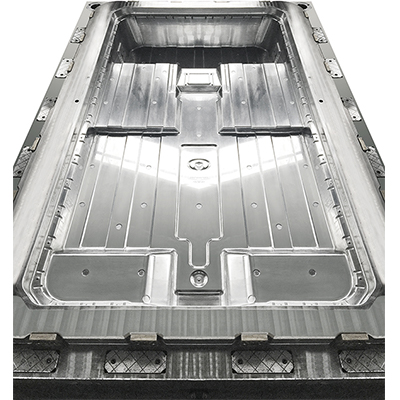What is lightweighting of automotive molds and how to achieve lightweighting?

Lightweighting automotive molds is a common engineering goal to reduce the weight of automotive components to improve fuel efficiency, reduce emissions and improve overall vehicle performance. The following are some common methods of lightweighting automotive molds:
Material selection: Choosing lightweight materials is one of the most common methods of lightweighting. For example, using aluminum alloy, magnesium alloy or high-strength steel instead of traditional steel can significantly reduce the weight of the mold.
Structural optimization: By optimizing the structural design of the mold, the amount of material used can be reduced without affecting its functionality. This can be achieved through topology optimization, finite element analysis and other engineering techniques to ensure that the use of materials is minimized while maintaining necessary stiffness and strength.
Processing technology: Using advanced processing technology can achieve higher precision and less material waste. For example, the use of high-precision machining processes such as CNC machine tools, laser cutting, and electric discharge machining can reduce material waste and improve mold manufacturing efficiency.
Multi-material combination: Combining the advantages of different materials, composite molds with excellent performance can be designed. For example, using lightweight, high-strength materials such as carbon fiber reinforced plastic (CFRP) in combination with metal materials can achieve the dual advantages of lightweight and high strength.
Mold geometry optimization: By optimizing the geometry and structural layout of the mold, material usage can be reduced and the performance of the mold can be improved. For example, the weight of the mold can be reduced by adopting hollow structures, reducing wall thickness, and optimizing structural layout.
Heat treatment technology: The use of advanced heat treatment technology can improve the strength and hardness of the material, thereby reducing the material usage of the mold. For example, heat treatment processes such as quenching and aging can improve the strength of the material and reduce the weight of the mold to a certain extent.
Intelligent manufacturing: The use of digital technology and intelligent manufacturing technology, such as 3D printing, additive manufacturing, etc., can achieve high degree of customization and precision processing, thereby reducing material waste and improving the lightweight effect of molds.
the lightweight of automobile molds can be achieved through various methods such as material selection, structural optimization, processing technology, multi-material combination, mold geometry optimization, heat treatment technology and intelligent manufacturing. The combination of these methods should be comprehensively considered and selected based on specific application scenarios and requirements.
Plastic molding can simplify the production of parts with complex shapes and adapt to the needs of different parts.
Tabpear helps global customers find high-quality Chinese suppliers and manufacturers. You are welcome to email us to consult us!
所有评论仅代表网友意见
